Home > Run Time Error - Human Resource Machine Review
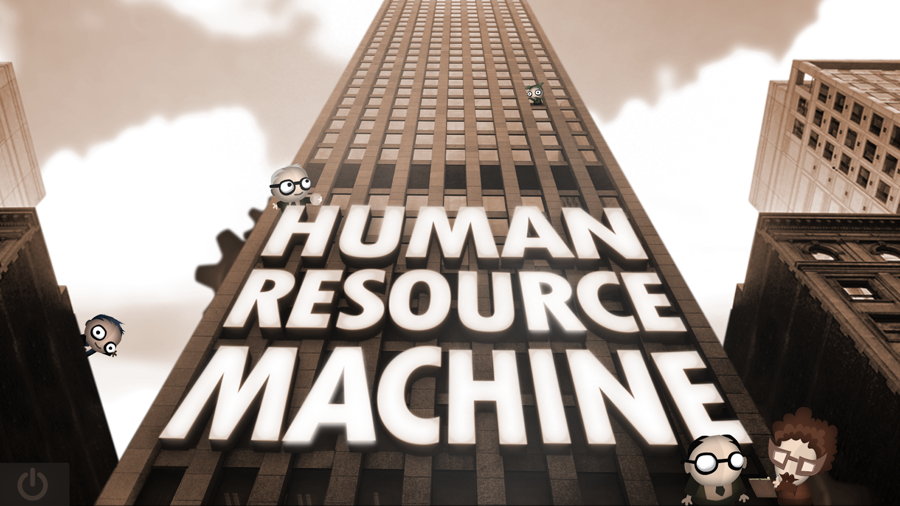
Remember Little Inferno from the Wii U's launch back in 2012? It was the first indie I played on Wii U and it remains to be one of my favorites. Despite being entirely unorthodox, it had everything I never knew I wanted from a game. The developers (who also had their hands in the excellent World of Goo), Tommorow Corporation, has finally put out another game: Human Resource Machine. Did it live up to hype after their history of stellar games? Probably not. But we thought it was pretty fun anyway.
Platforms: PC, Wii U [Reviewed], iOS
Developer: Tommorow Corporation
Release: October 29, 2015
MSRP: $9.99
Press Copy provided by Tommorow Corporation
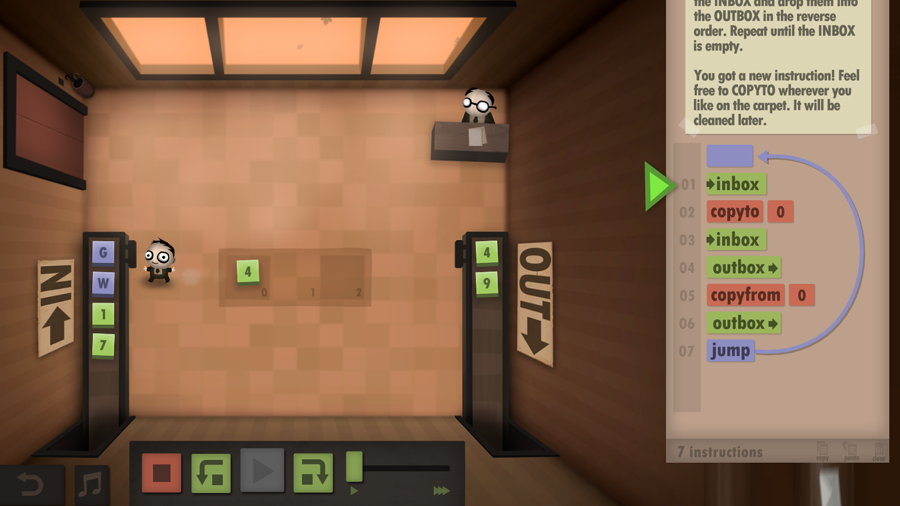
Like Little Inferno, Human Resource Machine doesn't really play like a normal game. This time, you take on the role of a young employee who must climb the ranks of some corporation. The work you do is programming, but you don't have any sort of computer to do it with. You, as a human, must physically "program" in order to complete tasks, thus: Human Resouce Machine. My main beef with this game is that it attempts to do two different things that don't realy work together. It feels like the game is both trying to teach the concepts of programming while also appealing to programmers and computer scientists who already understand all the logical puzzles and solutions that are presented in the game.
Rather than teach or use a well established introductory language like java or python, the game presents it's own. It's a very basic language that consists of a dozen or so commands that do simple things: add/subtract numbers, copy to/from floor tiles, and jumping to other areas in the program (to create loops). The programming interface uses a simple drag and drop of commands in a list form that allows you to easily see a sequence of events and rearrange it as need be. Because you don't have RAM (remember: no computer), data in the form of numberes and letters are stored on physical floor tiles that have numerical adresses.
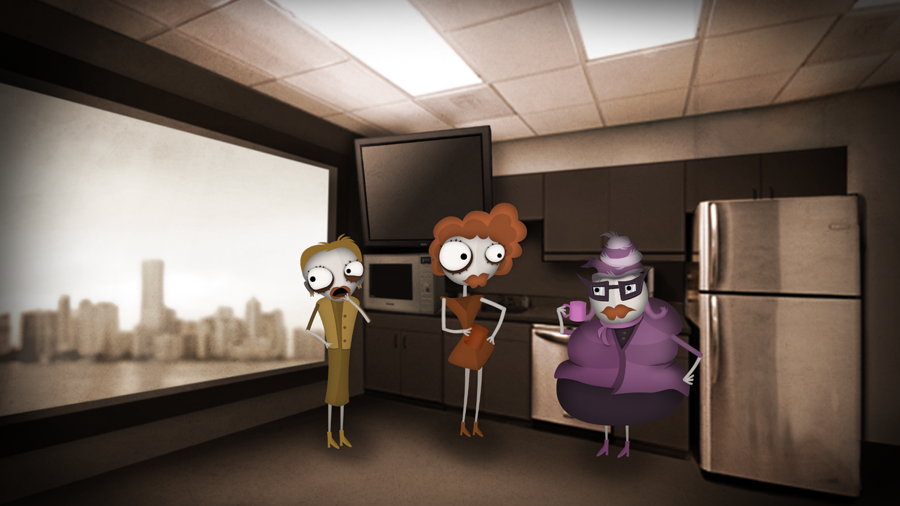
The game progresses through a series of 41 levels, each representing a year of your human life, that each have a specific task to accomplish. Once you write one program, you'll immediately move on to the next, with a few opportunities for optional alternate paths and additional levels. The goal of your program is given in a problem statement and you can get hints and examples from one of your two bosses. In addition to the main programming goal, each level has two additional and entirely optional optimization goals that ask you to limit the number of commands or steps of your program. These often require you to submit multiple sets of code for each level to complete.
The problem statements start out very simple and are easy for anyone to quickly accomplish. The game gradually introduces new commands so that users easily understand how to use each. There are also a lot of cool resources that parellel those in IDLE environments and make the programming much more clean: the ability to comment, tabs for independent code writeups, and a very handy debugging tool that will show you the step-by-step actions of your program. Despite an easy introduction, the game steeply increases in difficulty. Unless you are a programmer, the final puzzles of the game can be unreasonably difficult. This means that people without programming or puzzle-game expirience will likely be frusturated or downright unable to complete the game. Although no programming expirience is needed to play and complete this game, the ability to think like a programmer and advanced puzzle solving abilites are. This means that programmers will quickly blow this game in a few hours with relative ease and those unfamiliar will likely spend hours on each program, possibly to never finish them.
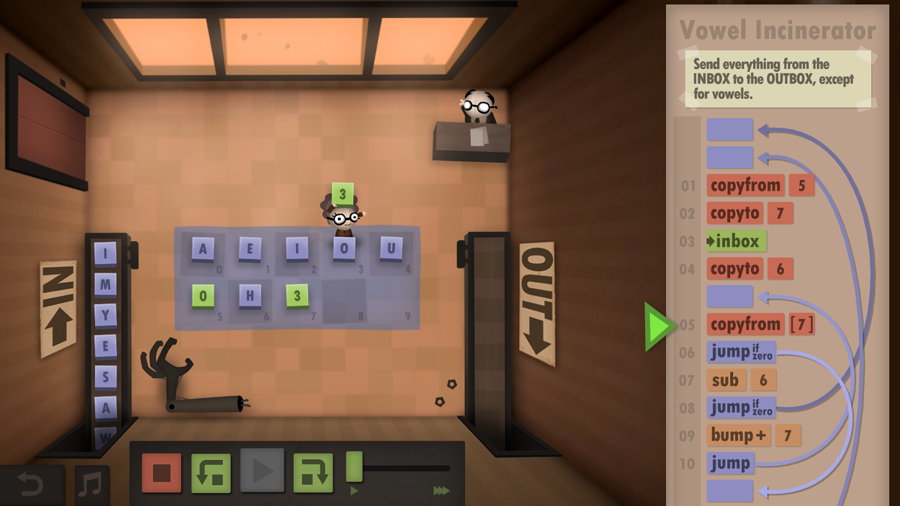
The plot and story-telling abilities have always been a highlight of Tommorow Corporation games. While there's still a certain charm about the game, the plot is surprisingly shallow. The story is told mostly through "coffee breaks" between programming assignments. I was expecting a sort of dramatic payoff at the end of the game, but it never seemed to come. The plot that is there is interesting and has a sort of darkness about it, but it's not what I was hoping for. As far as the rest of the presentation, Human Resource Machine is flawless. The art style is very fitting and the game is visually beautiful. The soundtrack is excellent as well.
There's a lot of things that Human Resource Machine does really well. The puzzles are challenging and very rewarding when you figure them out. User interface is well done and makes the only frusturating thing about the puzzles the sheer difficulty for non-programmers. There's not much of a plot, but what's there is engaging and feels very Tommorow Corporation. The game is aesthetically delightful and presented very well. However, the game isn't quite as fun or charming as previous games from the developer or in the $10 price range. The puzzles seem to go from way too easy to way too hard way too quickly. If you're a new or amateur programmer, you'll probably think that this game is pretty cool. If not, there's a good chance that you won't like it as much.
Pros
- Fun, logic based programming puzzles
- Unique and dark atmosphere, art, and music
- Excellent user interface
Cons
- Shallow plot
- Levels are either too easy or too hard
Verdict:
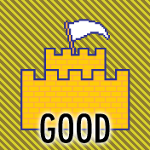
Good
Good games are simply that: good. They are generally fun to play but might be lacking in longevity, replay value, or presentation. These games might be good buying decisions for some people but not for others. Some otherwise great games may fall into this category if they are priced unreasonably high. The devil is in the details.
Want to know what this score means? Check out our Scoring Guidelines page.
About the Author:
Rial Johnson
Rial Johnson founded Nintendo Castle in 2011 with hopes to build the largest collection of Nintendo walkthroughs, guides, and content on the web. He is an avid gamer with a special place in his heart for Nintendo, but often finds himself writing about games more than actually playing them. You'll likely see him around Nintendo Castle and on social media, mostly managing the front-end content of the site.